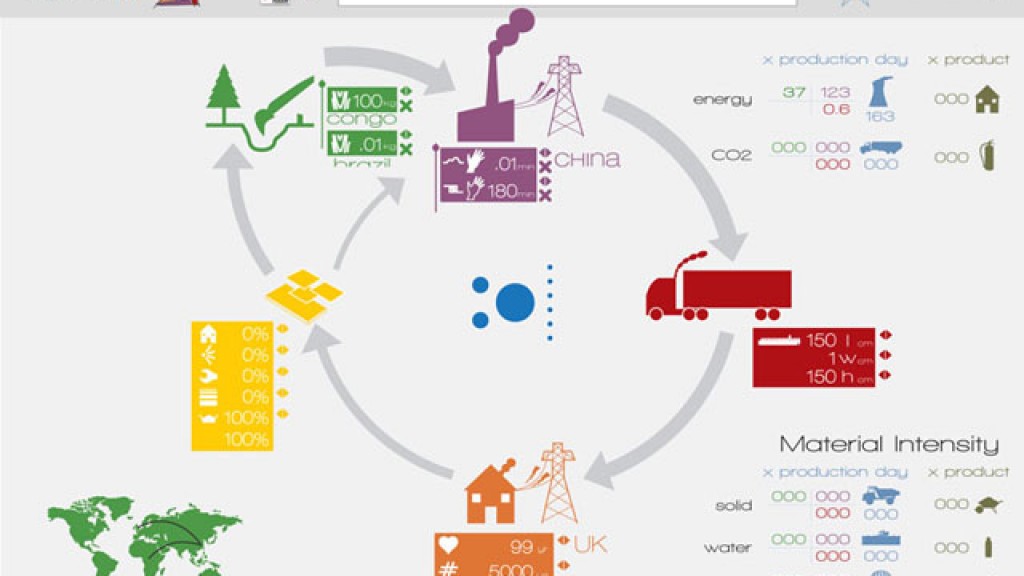Resources - Blog
The science behind a Circular Economy

Victor G. Martinez is a Transportation Designer with 18 years experience in the automotive industry, and currently a PhD student at Northumbria University. He got in touch with the Great Recovery to seek feedback on his in-development educational tool, Trophec.
What can we learn from thermodynamics and biology in order to gain a better understanding of how to design products, services and systems towards achieving a Circular Economy?
If we want materials to run in cycles and transform the perspective we have of products from consumables into tools, enabling experiences and services, we have to take a closer look into the only system we know that has done this for billions of years.
When speaking about matter and the energy to transform it, organisms on Earth work in a highly efficient way, achieved by natural selection and ruled by the laws of thermodynamics.
This process begins with energy from the Sun, which is captured by plants and together with substances in the soil, through photosynthesis these organisms create their own food source allowing them to grow. Later in time they become the food source for other organisms. You don’t have to wait very long to have a very complex and rich food web.
But this is only the start, have you ever wondered why there are more carrots than rabbits? Or rabbits than wolves? Each time that matter is passed from one organism to other, some energy and matter is lost, with not all being transferred to the next level. So organisms are limited in size and number, mostly by the food source availability and the efficiency by which they capture and process the stuff they need to live. Actually these ‘losses’ are not really that, a great part of it is food for other highly relevant organisms that decompose matter into their original compounds, with the entire process starting again.
The higher in the food chain, the more complex matter is formed and consequently more energy is necessary to transform it. So we have to bear in mind that there is a limit in size, number and unnecessary complexity.
One last thing normally passes unnoticed, the decomposers. Organisms with the vital role of allowing the process to start all over again, these are the most abundant, diverse, distributed and smallest of all, a true almost invisible army that enables life to start again.
If every life form we know about and every process in the universe follows the same laws, is it not a bit pretentious to think that human creations would not follow these laws and get away with it?
Consider how we humans, not only produce and use objects, but how we do business with them. We currently have the technology and knowledge to produce objects with the efficiency and characteristics necessary to perform in a circular fashion.
The challenge lies within our business models, our business strategies, our view of “value” and “profit”, how we achieve it and what we do with it.
The challenge is to change the mindset that currently use products as income (meant to be spent), and treat them as capital (meant to be kept and grow).
Some designers don’t look beyond the function and aesthetics of a product, but their creativity could produce amazing, innovative solutions if the design process included the option of how to “decompose” the product. What could it mean if a product is never discarded and stays in the hands of the user? Or if a part stays with the user, a part goes back to the producer and a part is biodegradable? What wonderful and innovative business strategies are we capable of envisioning?
As part of my doctoral project, I am exploring how the design process is affected when integrating all these concepts in the very early stages of it. With this in mind, I have developed a free online tool to enable designers to play with basic lifecycle variables and engage in producing these types of strategic questions.
The next evident thought is that this process can’t and shouldn’t be in the hands of designers alone, the task requires a multidisciplinary and integrative approach. We still have a long way to go, but without a doubt this is a very exciting challenge. It is a very exciting time to be alive and participate in this highly relevant moment of human history.
Trophec is in very early stages of development and we have just begun to test it, I encourage you to try it, there is no cost involved and it will be available throughout 2013. All feedback will be highly appreciated.





